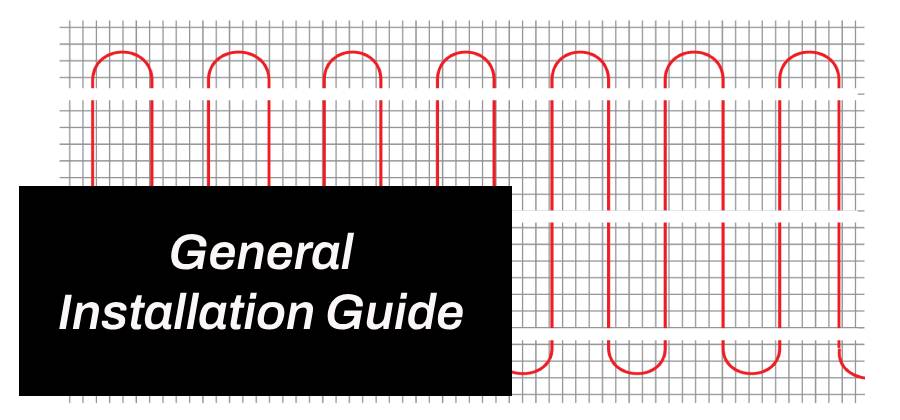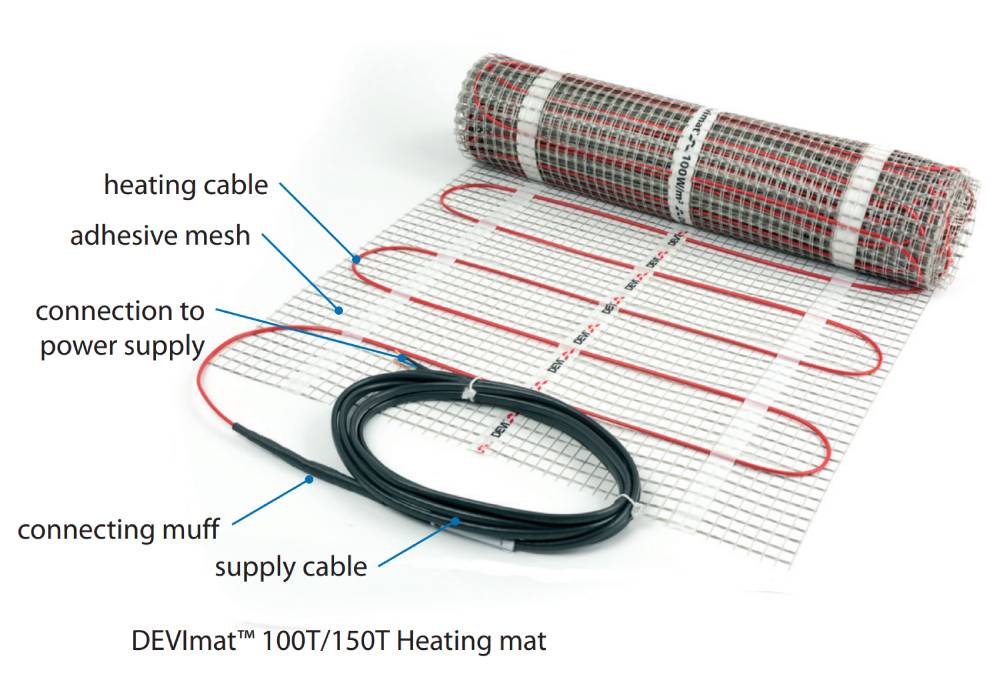At Sparks we distribute a wide range of underfloor heating cables and heating mats, many of them by DEVI, and it is only natural that we would have a general installation guide for these underfloor heating cables and thermostats.
We are not qualified to give any advice on installing these underfloor heating systems, but Danfoss has many guides that are very useful in this respect.
Below we are posting the Danfoss guide to the General Installation of the DEVI underfloor heating cables and thermostats, which can be found on their website.
General Installation Guide for Underfloor Heating Cables and Thermostats
- The installation of heating cables and thermostats should comply with general and local regulations. The cables and the thermostats should only be connected by an authorized electrician and connected to an RCD.
- It is important that the floor construction is well insulated according to the building standards so the downward heat loss is kept to a minimum.
- Rim zone insulation, along the walls, should be efficient in order to prevent heat from being transported to the foundation walls or adjoining rooms, and allow for a thermal expansion of the concrete.
- The foundation must be clean and free of sharp objects.
- The cables must never come into contact with the insulation material or become enveloped by it in any way. The cables must be evenly spread on the available floor and led around permanently fixed objects such as bathtubs etc.
- The cables must be gently attached so they are not damaged.
- The concrete around the cables must not contain sharp stones and should have a consistency that enables it to surround the cable completely without leaving air pockets. The concrete should be applied very carefully in order not to damage the heating cables!
- Concrete must be lain out in such a way, that air pockets inside it are avoided.
- In connection with wet rooms (bathrooms etc.), a damp-proof membrane should always be used to prevent moisture from entering the floor construction.
- If the floor is built on the ground, a damp-proof membrane is needed to prevent moisture from moving upwards and into the floor construction.
- The wire of the floor sensor must be protected by a plastic pipe.
- The sensor must be positioned in the centre at an open end of a cable loop. Where the pipe is bent between the floor and the wall, the minimum bending radius is 6 cm. The pipe must be sealed at the end to prevent concrete from entering.
- Should the cable become damaged while being laid out or later during the building process, it is a great advantage in the fault-finding process to know the exact positioning of the connection box between the heating cable and the cold cable as well as the end of the cable end, as the cable layout. It is therefore important to make a sketch showing the positioning of these things in the room.
- Heating cable and floor sensors resistance needs to be measured before, after installation and after installation of concrete, before the thermostat is connected.
- The heating cable and the connection muff between the heating cable and the cold cable must both be cast in concrete. If the cable is pushed down into the insulation material or covered by it in any other way, the surface temperature can become too high, which might result in cable defects at worst.
- At low temperatures (below 5 °C) the cable can become difficult to handle due to the plastic sheath.
- This problem can be overcome by connecting the cables for a short period. For this purpose, THE CABLE MUST BE ROLLED OUT! When the cable has become flexible again, the electrical flow should be disconnected. It is not recommended to lay cables at temperatures below - 5 °C.
- The floor heating must not be turned on before the concrete has fully set.
- It takes approximately 30 days for concrete and usually 10-15 days for moulding compound, tile glue etc. (it is important to carefully follow the manufacturer’s recommendations).
- Keep a min. 5 cm air gap beneath permanent objects like desks, beds, and floor surfaces with installed floor heating. In connection with wet rooms (bathrooms etc.), a damp-proof membrane should always be used in order to prevent moisture from entering the floor construction.
- The thermostat fitted with an air (room) temperature sensor should always be placed on the inner wall, away from the doorway or other large openings, and not in direct sunlight.
- A thermostat fitted with an air (room) temperature sensor should be placed above the floor at ~1,5 m (0,8 - 1,8 m) height.
- To ensure an accurate and easy installation of the cables, DEVIfast™ fitting bands can be used.
- The DEVIfast™ fitting bands are equipped with attachment clips at intervals of 2,5 cm so the distance between the cable loops will be 5, 7,5, 10, 12,5, 15, etc.
Buy Kitchen Underfloor Heating Mats
If you are looking for wooden underfloor heating, laminate underfloor heating mats, or concrete underfloor heating cables, visit the Underfloor Heating section on our website. For larger projects and further advice, do not hesitate to contact us and our specialists will be in touch.






